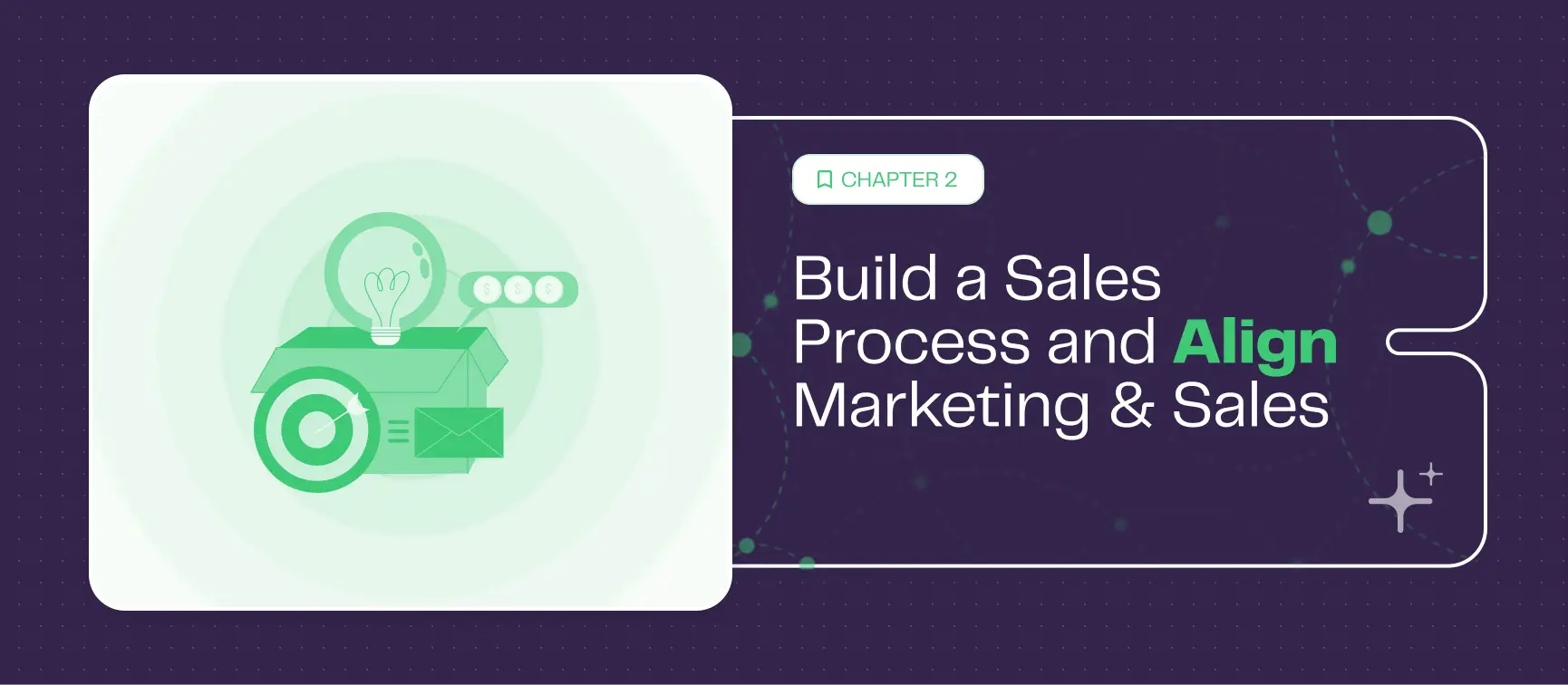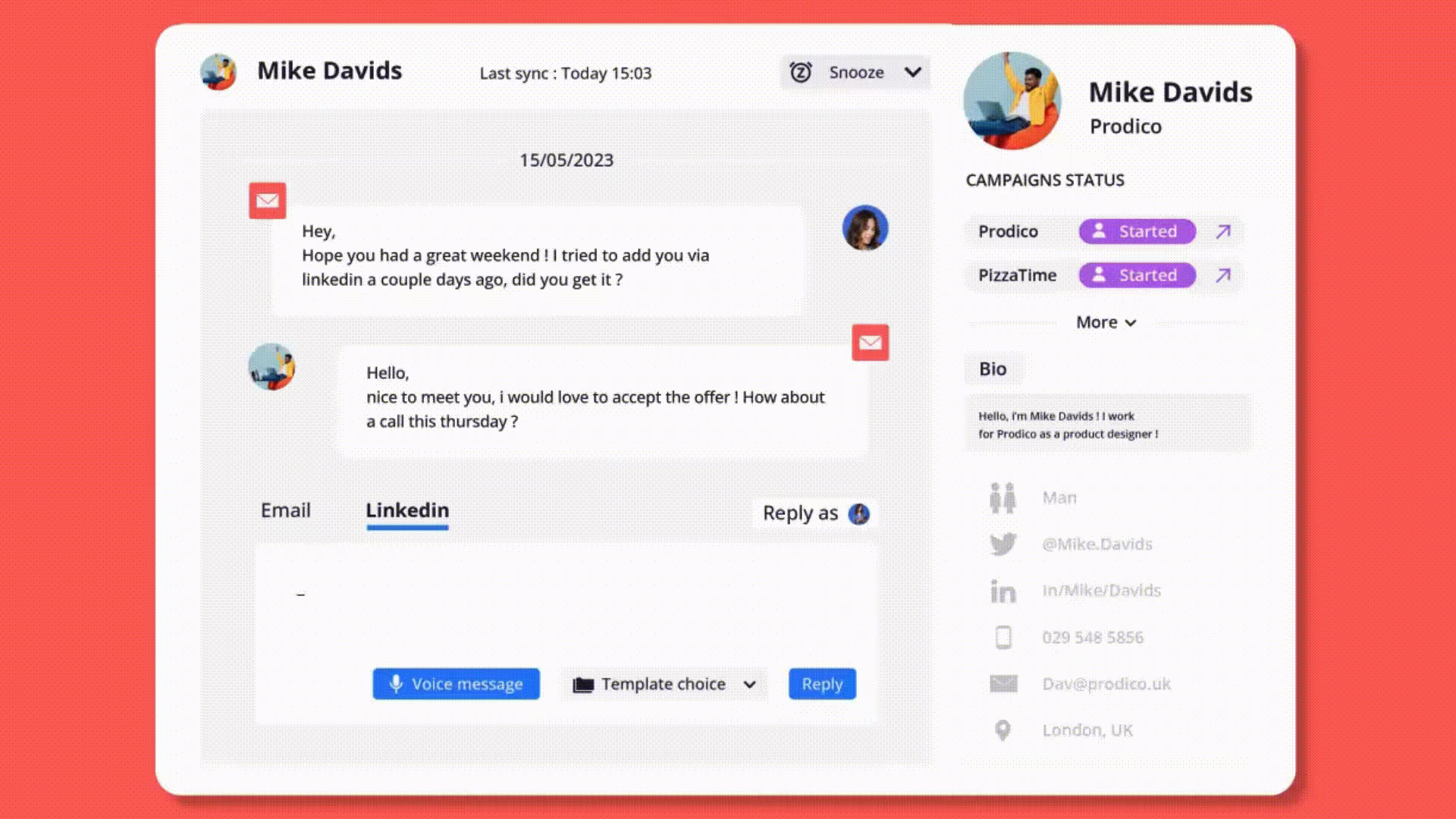
When your Allbound machine starts picking up speed, things can get messy fast: reps interpret ICPs differently, SDRs launch rogue campaigns, and marketers tweak messaging mid-sequence. One week, you’re aligned; the next, you’re wondering who’s doing what and why.
Enter the playbook. It’s not the dusty 80-page PDF you forgot to update. It’s a living, central resource that aligns your team, scales your best tactics, and protects your process as you grow.
The companies that scale cleanly operationalize their strategy early; the playbook is how they do it.
Why build a shared playbook?
A well-built sales and marketing playbook does more than document how you sell. It creates shared clarity.
It’s not just for onboarding (though it’ll save your new hires weeks of guessing). It’s a reference guide for everyone on the GTM team, especially when launching new motions, new markets, or new hires.
Here’s what a real playbook gives you:
- Faster ramp-up: No more “shadowing someone for 2 weeks”; new hires get the how, why, and what in one place.
- Consistency across tactics: Stop reinventing cold messages every quarter. Build a library of what works and scale it.
- Shared language and standards: Wondering how marketing and sales work together? They stop arguing once you’ve aligned on terms, triggers, and goals.
- Process hygiene at scale: The more people you hire, the more fragile your GTM machine becomes. A playbook reduces variance while keeping agility.
Think of it as your single source of GTM truth, the tactical brain of your Allbound engine.
Tools like Notion, Slite, or AirManual help you build it. But the software wrapper matters less than the thinking you put into it. Start early, make it lean, and evolve it as you grow.
Pro tip: Don’t let it rot. Assign ownership. Define a revision workflow. A dead playbook is worse than none.
Key components of your playbook
Internal alignment
Start with your internal structure. Why? Because confusion starts with org charts and undefined roles.
Include:
- A Sales and Marketing org chart with clear responsibilities
- Your team’s operating principles—what’s expected, how teams collaborate
- A shared glossary to eliminate ambiguity around MQL, lead, SQL, ICP, SLA, etc.
This is especially helpful for new hires or when expanding internationally, where roles and vocab drift fast.
Want to know how marketing and sales work together? This is where it starts: with aligned definitions, expectations, and ownership

Offering and positioning
Everyone should be able to pitch their product similarly, tailored to their role, but grounded in the same messaging.
Include:
- Breakdown of your products/services
- Core value propositions by persona
- Competitive snapshot: who you’re up against, how to position, what to say when
You can also include objection-handling frameworks or key counterpoints for high-frequency sales blockers.
Tools and internal stack
Your stack isn’t clear if your reps ask, “Where’s the doc?” more than prospecting.
Include:
- Your tool directory (CRM, La Growth Machine, enrichment tools, Notion, Slack, etc.)
- Setup guides for must-have tools
- Communication norms: how and where to collaborate
The goal: zero ambiguity, zero tool fatigue.
Sales strategies and execution
This is your playbook’s core, where you build a scalable sales process that aligns teams, channels, and buyer journeys.
Map out:
- Who reaches out to whom (based on ICP, intent, segment)
- What channel to use when (cold vs. warm, LinkedIn vs. email vs. ad retargeting)
- What the customer journey looks like: from first touch to SQL to closed-won
Use visuals. Map it out. You want everyone—SDR, AE, RevOps—to see the same flow, with crystal-clear roles and actions at each stage.
This is where you show how your Allbound strategy plays out across the funnel in real life.
Ideal customer profile (ICP)
This isn’t just a personal doc. This is your strategic targeting framework.
Include:
- Detailed ICP breakdown (firmographics, tech stack, triggers)
- Buying committee map: who influences, who signs
- Non-ICP red flags: the leads that look right but always go nowhere
Scripts and templates
This is your consistency engine, the fastest way to ensure your messaging is on-brand and personalized.
Include:
- LinkedIn and email outreach templates
- Follow-up sequences by lead stage
- Personalization rules: when to use first name only vs. job title, when to reference content, etc.
- Automation dos and don’ts, so reps know when to humanize and when to scale
Update these based on your best-performing A/B tests from LGM. Build the loop.
KPI structure and tracking
If you’re not transparent about targets, you can’t expect alignment.
Include:
- What metrics is each role accountable for
- How are those metrics calculated
- Where they’re tracked (and how often they’re reviewed)
This helps avoid the “I didn’t know I owned that” conversations—and reinforces data as a shared language across teams.
Compensation
This one depends on your culture, but if your comp model touches GTM (and it does), document it.
At a minimum, clarify:
- How reps are compensated on Inbound vs. Outbound
- How pipeline sourced vs. pipeline closed is rewarded
- What incentives (spiffs, bonuses, multipliers) are in place
Incentives shape behavior. Please make sure they align with the playbook.
Deep dive: Setting up and optimizing your sales pipeline
A messy pipeline is one of the fastest ways to lose deals, misread data, and waste reps’ time. But most teams don’t have a pipeline problem—they have a clarity problem. Too many leads are stuck in limbo, and too many stages have no clear criteria. There is too much guesswork between sales and marketing about who owns what and when.
This section gives you the blueprint to fix that, with clear stages, sharp definitions, and tools that make your sales motion visible and fast.
The key stages of a sales pipeline
Let’s immediately clear one thing: The sales pipeline ≠ sales funnel.
The funnel tracks prospects’ progress through stages of awareness and interest. The pipeline tracks what your sales team is doing with each lead and where those leads stand in the buying process.
Your pipeline should show:
- Who are you talking to
- Where are they in the buying journey
- What’s been done—and what’s next
It should be shared across sales and marketing. If you’re not using the same stages and definitions, you’re not working with the same leads.
Here’s a breakdown of the six core stages that should anchor your Allbound pipeline:
1. Prospect
Who qualifies:
A company or individual who could benefit from your offer hasn’t yet qualified.
Where do they come from?
- LinkedIn outreach (via LGM)
- Scraped lists
- Events, referrals, or content downloads
- Cold Inbound (web traffic, webinar signups)
Goal: Enrich and score. You’re looking for fit and intent.
2. Qualified lead
Now we’re talking.
These leads hit your scoring thresholds (based on Module 4) or fill out a high-intent form. They show promise. They’ve engaged. They look like your ICP.
Goal: Route them quickly to the right rep or sequence. Prioritize based on fit + timing.
3. Contacted or meeting scheduled
You’ve made the first real move—or they have.
This includes:
- The LinkedIn connection was accepted, and the conversation started
- Cold email replied to
- Demo booked
- Discovery call scheduled
Goal: Validate their needs, urgency, and buying power.
4. Proposal sent or requested
You’ve qualified them. They’re interested. You’ve mapped the need.
Now, you’ve sent over the following:
- A proposal
- Pricing package
- Custom offer
- Or they’ve asked for one
Goal: Move to close. Follow up fast and remove friction.
5. Closed (won or lost)
Every deal ends here, but not every “no” is final.
You need a clean “closed-won” and “closed-lost” distinction.
And “ghosted forever” isn’t a pipeline stage; archive it or send it back to nurture.
Goal: Move fast past closed-lost. Don’t let your pipeline become a graveyard.
6. Retention (post-sale)
Deals closed? Great. Now, don’t disappear.
This stage is about:
- Onboarding follow-up
- Upsell/cross-sell efforts
- Account-based re-engagement
- CS to Sales hardbacks for expansion
Your Allbound motion should loop here because customer growth starts at a close.
Key tools for managing a multichannel pipeline
You can’t run a multichannel strategy off a spreadsheet. You need tools that show the whole picture, across LinkedIn, email, and internal sequences, with leads moving clearly through each stage.
Here’s what a modern Allbound team should consider:
LGM (La Growth Machine)
LGM has been built specifically for Outbound teams. You can:
- Build audience lists using ABM segmentation, Lookalikes, and intent signal insights.
- Launch multichannel sequences across emails, LinkedIn DM, voice notes, videos, X, and calls.
- Automatically move leads between stages based on behavior.
- Sync with your CRM—so replies, actions, and stages are tracked in real-time.
- Get access to performance metrics by channel, persona, and campaign.
Bonus: 60 %+ average response rate across multichannel sequences. Try hitting that with just a cold email.

Other tools worth knowing
- Trello: Great for small teams or visual thinkers. Treat each list as a pipeline stage.
- HubSpot CRM: Strong free tier, complete pipeline visualization, integrates well with marketing automation.
- Zoho CRM: Includes territory mapping, forecasting, and sales automation features.
- Pipedrive: Super visual pipeline, activity-based selling, tracks emails, calls, and deal momentum.
Tips for optimizing your Allbound pipeline
Whether you operate locally or internationally, these tips will help you improve your sales pipeline, making it leaner, clearer, and more conversion-ready.
Maintain close follow-up:
- Set delays between stages carefully
- Use automation for reminders, but keep messaging human
- Define who owns each lead at every stage (no ambiguity)
This should be documented in your Sales & Marketing playbook.
Be realistic about your health:
- Don’t waste cycles on cold, misaligned leads
- If a lead hasn’t responded in 30+ days, send it back to nurture
- Keep a clear definition of what qualifies for each stage
Define your ideal sales cycle:
- Know your average time from stage to stage
- Benchmark cycle length by persona, segment, and deal size
- Look for bottlenecks, where deals stall, where momentum dies
Clean regularly:
- Archive stale leads
- Update lead statuses weekly
- Recycle leads to Marketing when they cool off, keep the Allbound loop going.
Think of it like pipeline hygiene: clean data = cleaner forecasting = more straightforward strategy.
Analyze and act:
- Run regular pipeline reviews—not just for forecasting, but for insight
- Look at win/loss ratios, stuck deals, and stage velocity
- Use that data to refine ICP, messaging, and targeting.
Takeaways
Scaling your GTM machine without a playbook is like building a rocket with no blueprint—chaos is guaranteed.
A modern playbook isn’t static: it’s a living resource that aligns your teams, protects your processes, and helps you scale precisely.
- Ramp faster: A good playbook cuts onboarding time by weeks, giving new hires immediate clarity.
- Consistency is leverage: Document your best tactics, scripts, ICPs, and messaging to stop reinventing the wheel every quarter.
- Clarity kills confusion: Use org charts, shared glossaries, and role definitions to eliminate handoff drama and team friction.
- Your playbook is your GTM brain, which maps the whole buyer journey, defines who does what, and shows which channels to use when.
- Sales pipeline ≠ sales funnel. Define clear pipeline stages to avoid limbo leads and keep momentum high.
- Keep it real-time and cross-functional: Sales, Marketing, and CS should speak the same language and follow the same pipeline logic.
- Use tools like LGM to connect multichannel outreach with pipeline visibility, automation, and performance tracking.
Build it lean, start early, evolve as you grow, and for the love of growth, don’t let it rot. Assign ownership and update it regularly.
Ready to scale cleanly? Start your playbook now. One doc, shared truth, infinite leverage.
